 The Hollow is a new Netflix-original animated series produced by Vancouver’s Slap Happy Cartoons. And no, it doesn’t fall under the target demographic of Pre-K or Adult—as most Netflix-original series do. In fact, it has a Y-7 rating, which isn’t groundbreaking, but is definitely an outlier alongside the platform’s slim cartoon offerings.
The Hollow is a new Netflix-original animated series produced by Vancouver’s Slap Happy Cartoons. And no, it doesn’t fall under the target demographic of Pre-K or Adult—as most Netflix-original series do. In fact, it has a Y-7 rating, which isn’t groundbreaking, but is definitely an outlier alongside the platform’s slim cartoon offerings.
Allow me to start by saying that The Hollow is an entertaining 10-episode ride. I genuinely recommend it, despite its few shortfalls, and here’s why:
Its premise.
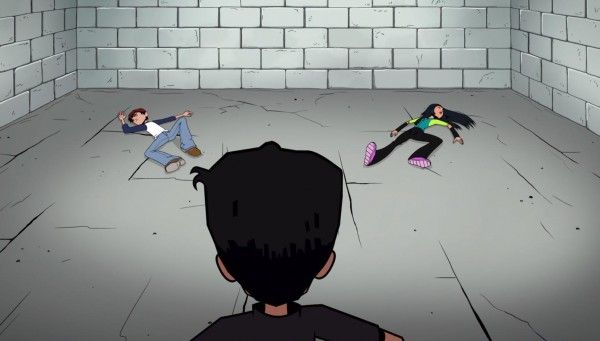
The Hollow emanates mystery right from its very first episode. The series begins with three teens waking up trapped in a bunker with no recollection of who one another is, and more surprisingly, who they themselves are. Their job is to collaborate to avoid danger within the mysterious world they wake up in, and piece together the mystery of: where they are, how they ended up where they are, and how to return to their normal world—where ever this may be. Within the first minute of the series, the audience is lured through the mystery of the above questions, making viewers more likely to stick around for the ride. The series leaves an impactful first impression that doesn’t hesitate to draw viewers in.
Its world.
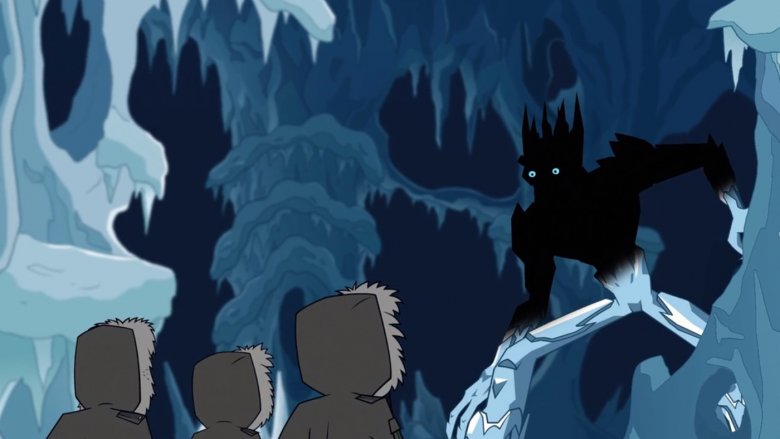
A major part of the series’ premise is the journey of discovering where the protagonists are based on their setting. The most confusing piece of the puzzle is that there are various realms which our main team explores. Some examples of these creative settings include: a desert city filled with anthropomorphic bulls, an ice-themed palace home to a gigantic snow monster, an abandoned experimental laboratory containing viles of magical potions—the list goes on, seemingly without limitations. These worlds strongly contrast one another and make for a variety-filled setting that is tied together through an interactive map which grows as the protagonists explore its, nonexistent, boundaries further. It does so in a way that leads audiences to crave more exploration into the other potential regions that can be discovered. Watching the characters interact and adapt to their various environments is half the fun of watching the series.
Its character-driven story.
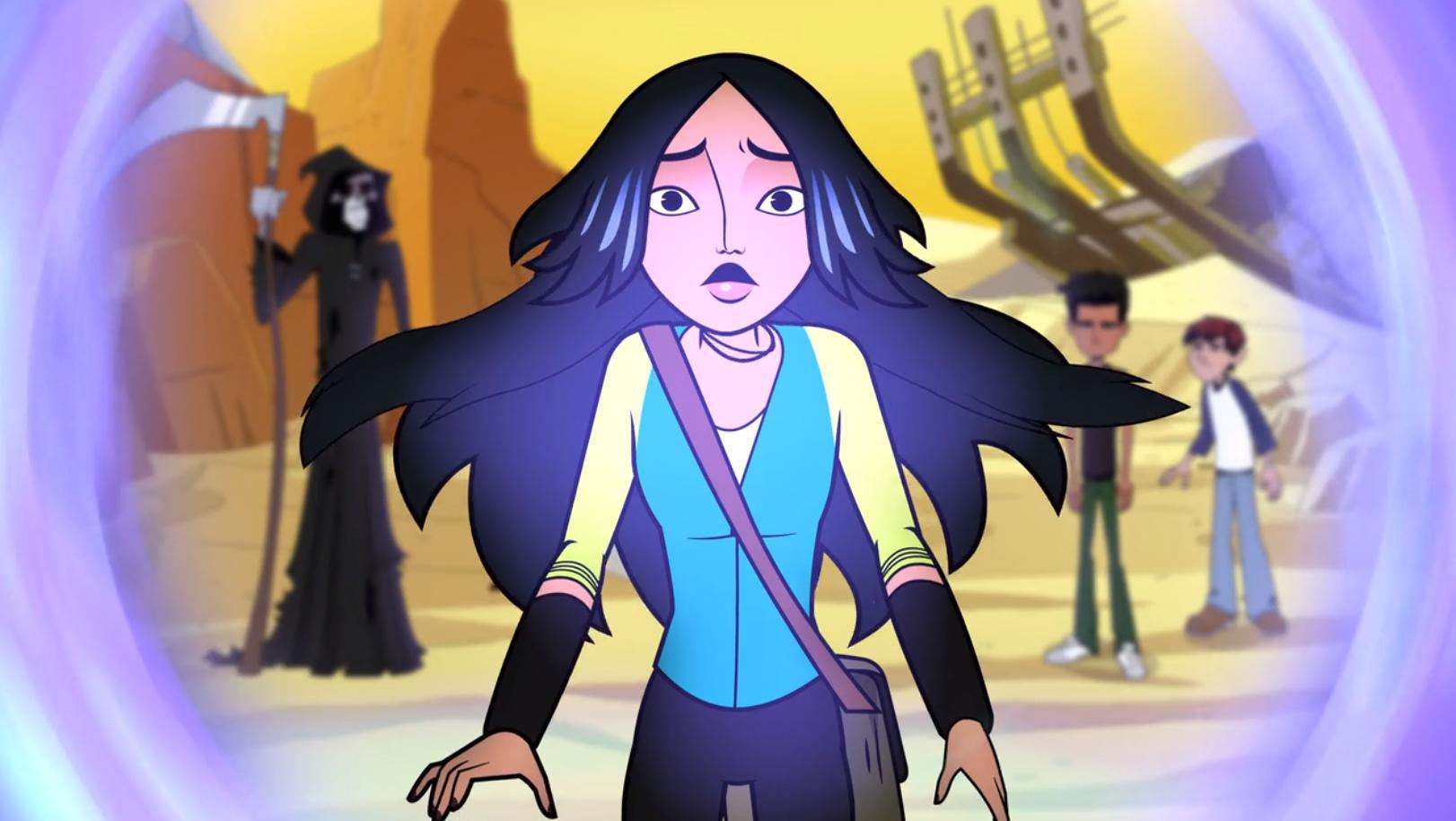
The Hollow indeed has a strong premise and mysterious story, but the series is driven more so by its characters rather than its plot. Yes, 2/3 characters fall into heavy tropes, and the self-proclaimed leader of the trio doesn’t have the greatest personality, but the series focuses on the characters as a single unit, working together by using each others’ strengths to solve different puzzles and overcome resisting forces. Yes, the promise of uncovering the who, what, and why of their situation is enough to captivate interest, but it’s not enough to carry a viewer to the very end of this 5-hour Netflix binge. Instead, watching the characters adapt to their surroundings and solve problems is what keeps the audience engaged—almost prompting viewers to think of solutions with the main characters.
Although there are many series that provide multiple perspectives so that the viewer understands what is going on on all sides, this series isn’t afraid to keep secrets from the audience; we know what the protagonists know and nothing more. Not only is this uncommon in animated works, but it creates a connection between the audience and the characters in implying that we are along for the ride, and can join in on the attempt to solve problems alongside them.
Now for the not so good:

A major complaint of the series is its portrayal of female characters. Mira is an excellent character who isn’t treated like the typical token female. Rather than focusing on her femininity, the series places her intelligence and knack for solving riddles at her core. There was however, one scene where Mira confessed her feelings to Adam and planted an unsolicited kiss on him (cue trope of the token female being at the center of yet another romance side plot), but they both awkwardly and hilariously brush it off and never acknowledge the act again. This scene was the epitome of teenage angst and although seemed to fall along the lines of stereotypical use of the token female, it instead seemed to act like a slap to the face of the main-guy main-girl romance trope. In this sense, this scene uniquely exemplified Mira’s use in the series as a whole.
Vanessa of the rival team, on the other hand, was a completely different story. The use of her character fell into a pool of problematic stereotypes, which was such a shame as she could have been utilized more smartly. She in conniving, tactful, and merciless—all great traits in an antagonist—however, her main weapon in fooling the other team is flirtation. She essentially strings Kai along, manipulating his budding feelings to her group’s benefit. This is Vanessa’s defining characteristic, and she constantly goes back to using this “technique” to get ahead.

Vanessa is indeed an intelligent and resourceful person, so in stooping to using her “lady prowess” to get what she wants was completely unnecessary. This aspect of her character could have been incorporated much more interestingly, but instead fell into a plethora of negative female tropes.
Speaking of the antagonist team, these characters were quite bland as well. Skeet was interesting in that he appears to be a genuinely caring person who was just a part of a different group, whereas the other two were not very complex in only showing a few distinct character traits and not much else.

Another story element that received a mixed reaction was the ending of the series. Without spoiling too much, the series ends in live action, which is a personal gripe of mine. Mixing animation and live action is not favourable in my opinion, stylistically clashing in a negative way. It made the series feel cheap in that the switch truly made the series’ small budget apparent.
Finally, a point mentioned by YouTuber Norman Dubian (see his review here), as a Netflix-original series, The Hollow is not confined to any rules that traditional broadcasters hold it’s content towards. It could have taken even more risks with its storytelling. But I will personally let this one slide as the series as a whole is steeping in unique.
Overall, the pros of the series well outweigh its cons. The Hollow is a unique cartoon that tries and succeeds to be something different in the realm where originality is becoming difficult to come by. It truly stands out, and I highly recommend it!



 The characters of Stretch Armstrong are both down to earth and likable. They truly feel like dynamic people, as opposed to walking stereotypes (with the exception of Ricardo who is still presented as quite one-sided). Both Nathan and Jake are full of insecurities, which seem to vanish once they step into their superhero personas. The confidence that they gain while keeping their city safe is realistically shown to influence each character in their day-to-day lives—in that they are more willing to take social risks given they willingly put their own lives in danger for their city whenever needed. The trio’s team dynamic works extremely well in that Nathan and Jake have been friends for an extended period of time due to their clear similarities, while Ricardo is forced into the group due to school circumstances, and correspondingly influences their routine. They each have unique traits that are more than enough to differentiate these characters from one another, utilizing a wide range of personality traits that audiences can relate to on, at least, some level.
The characters of Stretch Armstrong are both down to earth and likable. They truly feel like dynamic people, as opposed to walking stereotypes (with the exception of Ricardo who is still presented as quite one-sided). Both Nathan and Jake are full of insecurities, which seem to vanish once they step into their superhero personas. The confidence that they gain while keeping their city safe is realistically shown to influence each character in their day-to-day lives—in that they are more willing to take social risks given they willingly put their own lives in danger for their city whenever needed. The trio’s team dynamic works extremely well in that Nathan and Jake have been friends for an extended period of time due to their clear similarities, while Ricardo is forced into the group due to school circumstances, and correspondingly influences their routine. They each have unique traits that are more than enough to differentiate these characters from one another, utilizing a wide range of personality traits that audiences can relate to on, at least, some level.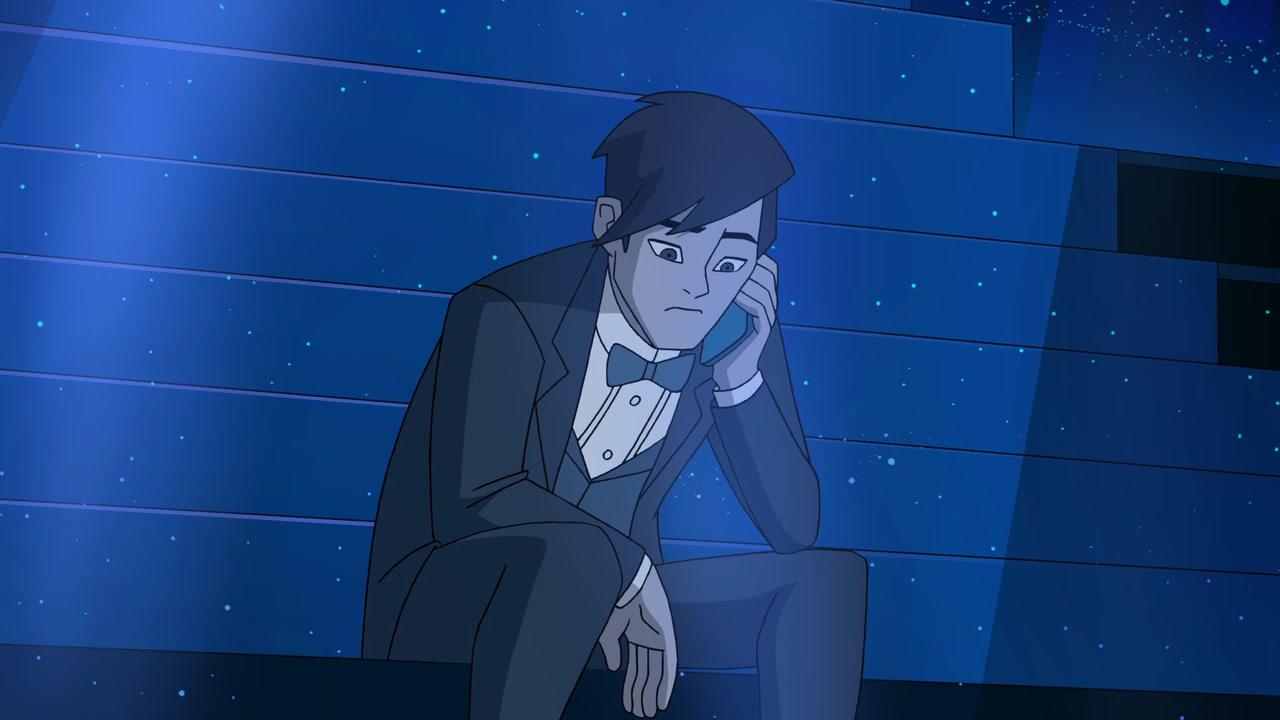
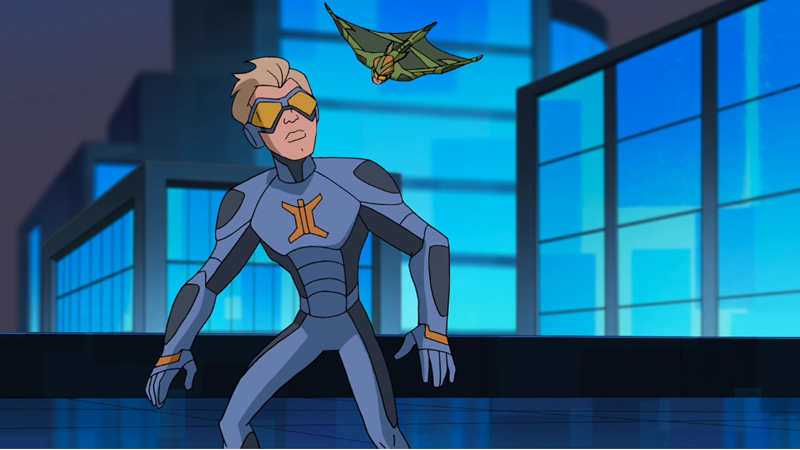
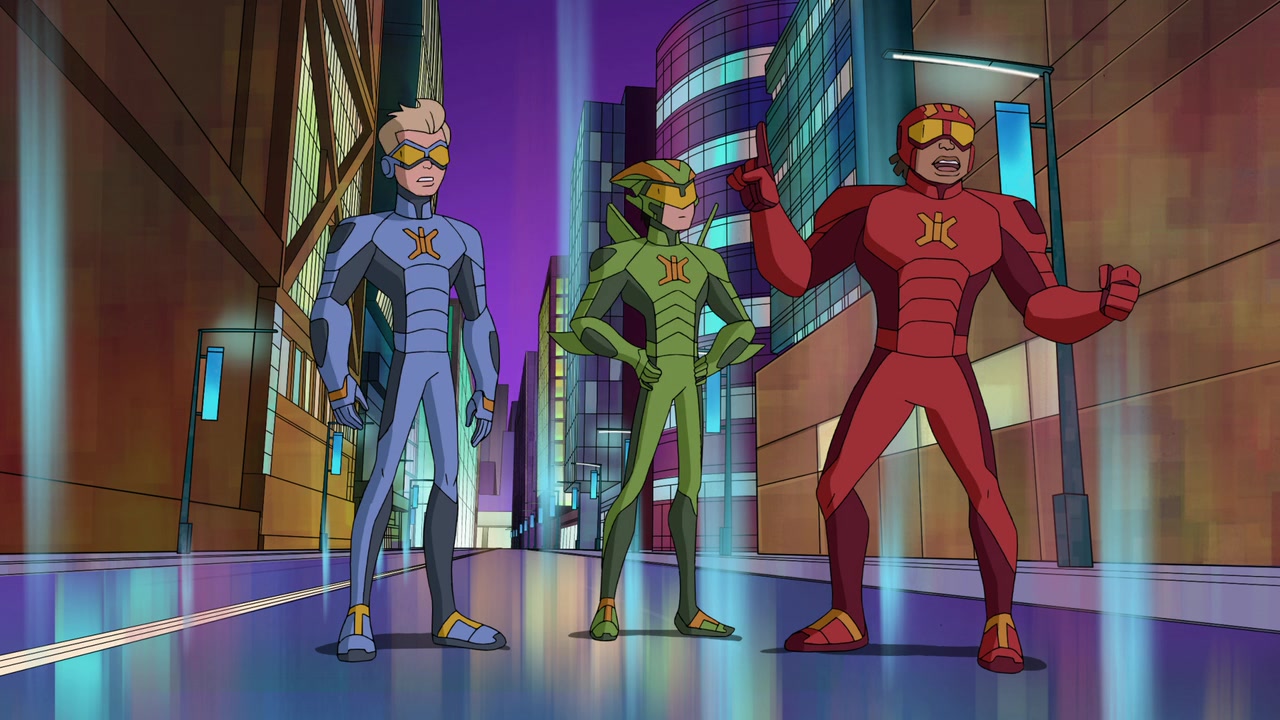 Characters of Stretch Armstrong and the Flex Fighters are presented as realistic and relatable in part due to their dialogue. Not only is there plenty of wit in their conversations, but they also speak among each other very realistically. Nathan in particular is the most relatabe character in the way that he is written. He says whatever is on his mind, no matter how rash or off-topic it may be given the circumstance—a common way of speaking with close friends in actuality. He isn’t afraid to admit his flaws or insecurities, and corresponding to this, is able to see and vocalize his own strong points as well. Aside from some awkward taunting puns while in superhero form, which is hallmark to the superhero genre, the Flex Fighters exercise a solid amount of amusing self-awareness. Teasing one another, along with superhero stereotypes as a whole, keeps the characters’ dialogue comedic and witty.
Characters of Stretch Armstrong and the Flex Fighters are presented as realistic and relatable in part due to their dialogue. Not only is there plenty of wit in their conversations, but they also speak among each other very realistically. Nathan in particular is the most relatabe character in the way that he is written. He says whatever is on his mind, no matter how rash or off-topic it may be given the circumstance—a common way of speaking with close friends in actuality. He isn’t afraid to admit his flaws or insecurities, and corresponding to this, is able to see and vocalize his own strong points as well. Aside from some awkward taunting puns while in superhero form, which is hallmark to the superhero genre, the Flex Fighters exercise a solid amount of amusing self-awareness. Teasing one another, along with superhero stereotypes as a whole, keeps the characters’ dialogue comedic and witty. The premise of Stretch Armstrong and the Flex Fighters is quite childish when broken down—a group of teenagers stumble upon toxic chemicals that grant them elasticity-themed powers. Not only do our heroes receive their powers in the most trope-complying way, but the element of elasticity that connects their powers as a trio is ridiculous at best. The concept of their city being overseen by a powerful technology corporation, head by its charismatic and intelligent CEO, is a huge stereotype (i.e. Lex Luther of Justice League & Young Justice, Abraham Kane of Motorcity, Vlad Plasmius of Danny Phantom). The characters’ personalities and weekly villains’ interesting designs are enough to differentiate the series from others with a similar premise, but not necessarily enough to define it as anything groundbreaking or unique.
The premise of Stretch Armstrong and the Flex Fighters is quite childish when broken down—a group of teenagers stumble upon toxic chemicals that grant them elasticity-themed powers. Not only do our heroes receive their powers in the most trope-complying way, but the element of elasticity that connects their powers as a trio is ridiculous at best. The concept of their city being overseen by a powerful technology corporation, head by its charismatic and intelligent CEO, is a huge stereotype (i.e. Lex Luther of Justice League & Young Justice, Abraham Kane of Motorcity, Vlad Plasmius of Danny Phantom). The characters’ personalities and weekly villains’ interesting designs are enough to differentiate the series from others with a similar premise, but not necessarily enough to define it as anything groundbreaking or unique. Stretch Armstrong and the Flex Fighters holds up a subpar comparison to its cousin Spectacular Spiderman‘s plot (but in all fairness, many superhero series don’t hold a candle to this title). Episode one of Stretch Armstrong is full of exposition that is presented in anyway but subtle. When Jake gives Ricardo a tour around their school in the first episode, the series’ writers use this as an opportunity to glorify the facility full of unique and trope-defying student cliques. This presents Ricardo as a mere storytelling device to explain the series’ context to the audience.
Stretch Armstrong and the Flex Fighters holds up a subpar comparison to its cousin Spectacular Spiderman‘s plot (but in all fairness, many superhero series don’t hold a candle to this title). Episode one of Stretch Armstrong is full of exposition that is presented in anyway but subtle. When Jake gives Ricardo a tour around their school in the first episode, the series’ writers use this as an opportunity to glorify the facility full of unique and trope-defying student cliques. This presents Ricardo as a mere storytelling device to explain the series’ context to the audience. Stretch Armstrong and the Flex Fighters’ largest drawbacks are due in large part to the series’ focus on marketability. It follows a specific, seemingly researched, formula that gives the three protagonists distinct colours and personality traits that translates well into merchandising. Additionally, placing one member of the trio on a pedestal, in this case Jake Armstrong, as the leader of the group is another common move done in heavily merchandised series—it’s much easier to focus on a central character as the face of the series on promotional material. And it’s no surprise that the head of the series is the only Caucasian character of the group. Unlike another superhero series that is commonly covered on this blog, Miraculous Ladybug, Stretch Armstrong tries to hide the fact that its entire conception is based on the foundation of merchandising. This approach makes the series a lot weaker, as it tends to undermine the viewers’ level of awareness to capitalistic intentions.
Stretch Armstrong and the Flex Fighters’ largest drawbacks are due in large part to the series’ focus on marketability. It follows a specific, seemingly researched, formula that gives the three protagonists distinct colours and personality traits that translates well into merchandising. Additionally, placing one member of the trio on a pedestal, in this case Jake Armstrong, as the leader of the group is another common move done in heavily merchandised series—it’s much easier to focus on a central character as the face of the series on promotional material. And it’s no surprise that the head of the series is the only Caucasian character of the group. Unlike another superhero series that is commonly covered on this blog, Miraculous Ladybug, Stretch Armstrong tries to hide the fact that its entire conception is based on the foundation of merchandising. This approach makes the series a lot weaker, as it tends to undermine the viewers’ level of awareness to capitalistic intentions. Conclusion
Conclusion